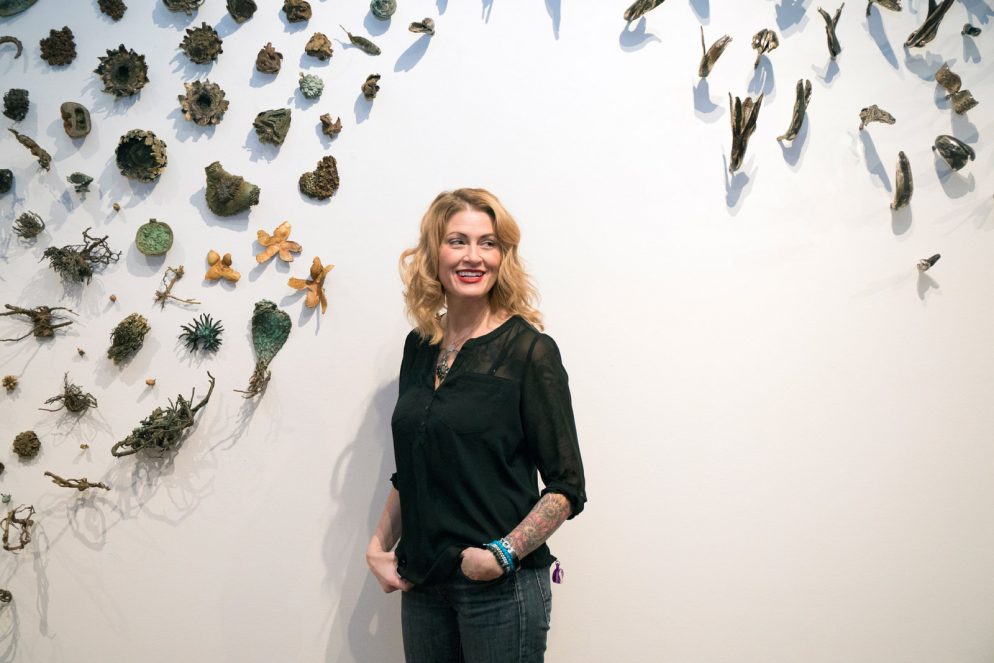I’ve been a full-time staff member of the Colorado Springs Fine Arts Center since March 2010. Though I am a now middle-aged Air Force brat and therefore not technically a native, I consider Colorado Springs to be my hometown. I spent 11 years in the District 11 public school system prior to attending the University of Denver; my parents still live here in my childhood home. And so it was with unbridled enthusiasm that I found my dream job in the very same museum where I visited for field trips, took art classes, and fostered my young love for the arts.
As curator of modern and contemporary art, I have the distinct privilege of working with an ever-growing permanent collection that contains many gems from the late-19th century onward. Care of the collection is at the core of curatorial responsibility, and as a collecting institution we make a lifetime commitment to protect, interpret, and display our works.
As we’ve been transitioning from the FAC to the Colorado Springs Fine Arts Center at Colorado College, the time has been nothing short of challenging, rigorous, inspirational, and exhilarating, all adjectives I would readily apply to the Colorado College experience, based on my newly established insider’s point of view. The vibrant intensity of the Block Plan and the creative ingenuity of those who teach, learn, and work through it regularly astounds me. In the past year and a half, I’ve been given the gift of opportunity to explore new ways of thinking about art and exhibiting it, why we need art and who it is for, and the ability to experiment with and articulate my personal curatorial approach — all critical issues and questions for a modern museum.
While I’ve stressed the criticality of collections care, I must confess that the part of my job I most love is the regularity with which I am able to engage directly with living artists. My curatorial philosophy is less “supreme being” and more “collaborator,” and I tend to view myself as a facilitator who can help bring an artist’s vision to fruition. My most personally rewarding exhibitions, and I believe some of the most publicly successful, have been built according to this model, not the least of which was the recently closed “Heartland,” an autobiographical body of work by sculptor Steven Durow.
Over the course of about four years, Steven and I talked about possibilities, only landing on the theme about two years ahead of opening. He continued to develop, change, and produce works until they were crated and brought to Colorado, about a week before opening last October. Exhibitions, like art itself, can be organic, living things. The willingness to let them be iterative, even after installation, is a notion that embraces the fluidity of the Block Plan and one that I have long admired in my colleague Jessica Hunter-Larsen ’90’s ambitious I.D.E.A. program and in her work as the FAC’s director of academic engagement.
At the FAC, the curatorial role doesn’t end with exhibitions and collections research. Some of my proudest moments have occurred in the context of special events related to exhibition programming. In 2013, we held the Gods and Monsters Bash, a Halloween party inspired by Pamela Joseph’s Sideshow of the Absurd, and the Bash is now an annual event attracting nearly 1,000 attendees each year. JAM FAC, a CC/FAC/community collaborative celebration of hip hop stemming from the jaw-dropping graffiti in “El Mac: Aerosol Exalted” followed in a similar vein in 2015, as did last December’s “Snow Ball: A Silent Disco” dance party held outdoors in the magical environment of Buck Walsky’s installation piece, “Beach Front.”
I am passionate about collaborations such as these: with contemporary artists, scholars, colleagues, students, and the community, across disciplines and divides. As we reconsider who museums serve and how art can make a powerfully positive impact on individuals and society, it is our charge to reduce or eliminate barriers to access, de-elitize the institution, and expand the narrative and voices represented within. It is my great hope that through this visionary partnership, one that feels perfectly obvious and natural, we will begin to see ripples of enthusiasm throughout the Pikes Peak Region and beyond.
